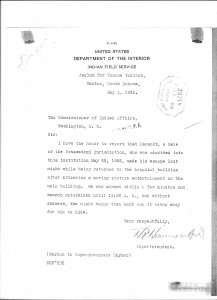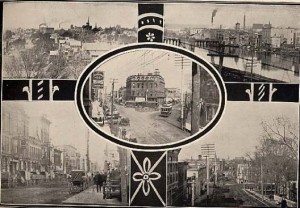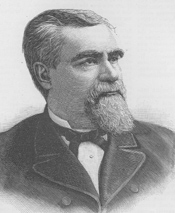Patients were often brought to insane asylums against their wills, and then stayed in them against their wills. Many were heartbroken to think that relatives or spouses would commit them to treatment in such places, and some patients discovered to their horror that there would be little chance of returning to their homes. Continue reading
Tag Archives: Oscar S. Gifford
South Dakota Is Still Brand New
South Dakota was still a relatively new state when Canton’s ex-mayor, Oscar S. Gifford, made good on his hope to have an Indian insane asylum built there. Dakota Territory had been created in 1861, and took its name from the Dakota Sioux word meaning “allies.” This huge tract of land included what became North and South Dakota, and most of Montana and Wyoming. Two years later, the territory was reduced to the area of North and South Dakota only.
By the late 1880s, the northern part of the territory had about 190,000 people in it, and the southern part about 340,000. These numbers justified statehood. North Dakota became the 39th state and South Dakota the 40th, on November 2, 1889.
How Unusual Was Canton Asylum?
Though early asylum superintendents in the U.S. had to both establish their profession and learn how to run asylums, they generally had at least some experience working in large institutions. Superintendents were medical men who usually acted as the asylum’s chief physician, and supervised assistant physicians and attendants. The Canton Asylum for Insane Indians was unusual in that its first superintendent had no medical background whatsoever, and had never managed anything more complex than his own small business.
Gifford was born in New York, and spent part of his childhood in Wisconsin, and later, Illinois. He served in an Elgin, Illinois unit during the Civil War, then studied law. He became a merchant and surveyor, and eventually a lawyer and a territorial delegate (from Dakota Territory). After a distinguished career, during which he helped guide South Dakota to statehood, Gifford was elected South Dakota’s representative to Congress. After he had moved back to Canton, South Dakota (where he had once been mayor), Gifford became superintendent of Canton Asylum.
______________________________________________________________________________________
Asylum’s Biggest Booster
Oscar S. Gifford—Canton, South Dakota’s first mayor–was also a lawyer, merchant, surveyor, and sometimes justice of the peace. He was the kind of hustle and bustle “booster” that the city applauded. Gifford had been born in Watertown, New York in 1842, but moved to South Dakota’s Lincoln County in 1871.
Gifford was well-respected by the citizens of Canton. He had served as a private during the Civil War, studied law, taught school, and energetically looked after South Dakota’s interests as first a territorial delegate and later, the state’s first representative to Congress. In 1896 he had been nominated as the Republican candidate for governor.
When it came time for the Indian Bureau to appoint a superintendent to the Canton Asylum, Gifford seemed the obvious choice—never mind that he had no medical background. Whether it was a reward for backing Senator Pettigrew or whether no one who was actually qualified wanted the job, Gifford got it.






